Later this month, the National Advisory General Medical Sciences Council will hold the first of its three meetings in 2011. While many applicants, grantees and reviewers are familiar with the roles and processes of study sections, fewer know how an advisory council works. In this post, I’ll provide an overview of its many critical roles.
Council members are leaders in the biological and medical sciences, education, health care and public affairs. Their areas of expertise cover the broad range of scientific fields supported by NIGMS. The Council performs the second level of peer review for research and research training grant applications assigned to NIGMS. Council members also offer advice and recommendations on policy and program development, program implementation, evaluation and other matters of significance to the mission and goals of the Institute.
A portion of each Council meeting is open to the public.
For the peer review function, which occurs during the part of the meeting that is closed to the public, Council members read summary statements, providing a general check on the quality of the first level of peer review. They advise us if they find cases where the comments and scores do not appear to be in good alignment. Their evaluation complements the initial peer review done by study sections, as it focuses primarily on summary statements rather than on applications (although Council members may have access to the applications).
Members also provide advice regarding formal appeals, typically discussing 10-20 cases per meeting in which a procedural aspect may have significantly influenced the initial peer review process.
The Council also provides input on cases where staff are considering exceptions to the well-funded laboratory policy, and it approves the potential funding of grants to investigators at foreign institutions. Another area of Council input relates to Method to Extend Research in Time (MERIT) awards. Finally, Council members point out applications that they feel are particularly interesting based on their scientific expertise and knowledge of trends in particular fields. They explain their perspective to NIGMS staff, who incorporate this input in subsequent steps of the funding decision process. I’ll describe these steps in an upcoming post.
The policy and program advisory function includes discussing “concept clearances,” or ideas for new initiatives being considered within the Institute. These can take the form of proposed requests for applications (RFAs) or program announcements (PAs). Council members provide critical analysis and feedback about the appropriateness of proposed initiatives and factors to consider should they be implemented. Approved concept clearances are posted soon after each Council meeting on the NIGMS Web site and often on the Feedback Loop. NIGMS staff can then receive input from the scientific community as they refine the funding opportunity announcements.
This month’s meeting will include one concept clearance presentation, on macromolecular complexes.
Council members also give input and feedback on assessments and formal evaluations of specific NIGMS programs, such as the Protein Structure Initiative. When the need arises, Council members form working groups focused on specific issues. To ensure an appropriate range of expertise and perspectives, these groups can include non-Council members, as well. Finally, the Council receives periodic reports about ongoing initiatives in order to monitor how they are proceeding and offer advice about possible changes.


 Over the course of its 10-year existence, the Protein Structure Initiative has supported the development of new technologies and methods that improve the throughput of protein structure determination. Many of them apply to the production of purified proteins for functional and structural studies, and you don’t need access to major research centers to use them.
Over the course of its 10-year existence, the Protein Structure Initiative has supported the development of new technologies and methods that improve the throughput of protein structure determination. Many of them apply to the production of purified proteins for functional and structural studies, and you don’t need access to major research centers to use them.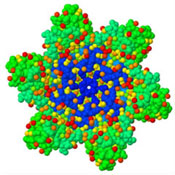
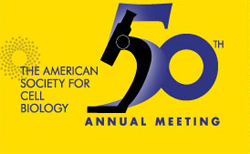 Cell biologists, including many of our funded investigators and a few of us from NIGMS, were in a celebratory mood as the 50th Annual Meeting of the American Society for Cell Biology kicked off December 11 at the Philadelphia Convention Center. The keynote symposium began with Gary Borisy’s description of the first ASCB meeting, when Hans Ris described his then-heretical finding that chloroplasts contain DNA. For more details about the genesis and early years of the ASCB, check out John Fleishman’s article, A Place of Our Own, in the December 2010 ASCB Newsletter.
Cell biologists, including many of our funded investigators and a few of us from NIGMS, were in a celebratory mood as the 50th Annual Meeting of the American Society for Cell Biology kicked off December 11 at the Philadelphia Convention Center. The keynote symposium began with Gary Borisy’s description of the first ASCB meeting, when Hans Ris described his then-heretical finding that chloroplasts contain DNA. For more details about the genesis and early years of the ASCB, check out John Fleishman’s article, A Place of Our Own, in the December 2010 ASCB Newsletter.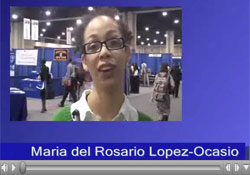
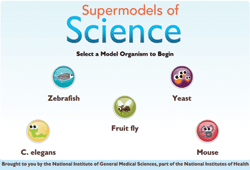 Many kids (and adults) learned more about science and technology at the 2-week-long USA Science & Engineering Festival this month in Washington, D.C. The event featured hundreds of activities, including performances, workshops, demonstrations, tours of mobile labs and interactive games. A number of these were hosted by NIH, which was also one of the event sponsors, and most of its components. The festival wrapped up last weekend with a grand finale expo on the National Mall.
Many kids (and adults) learned more about science and technology at the 2-week-long USA Science & Engineering Festival this month in Washington, D.C. The event featured hundreds of activities, including performances, workshops, demonstrations, tours of mobile labs and interactive games. A number of these were hosted by NIH, which was also one of the event sponsors, and most of its components. The festival wrapped up last weekend with a grand finale expo on the National Mall.
 This fall, NIGMS will be sponsoring the Society for Advancement of Chicanos and Native Americans in Science (SACNAS) national conference in Anaheim, CA, September 30-October 3, and the Annual Biomedical Research Conference for Minority Students (ABRCMS) in Charlotte, NC, November 10-13.
This fall, NIGMS will be sponsoring the Society for Advancement of Chicanos and Native Americans in Science (SACNAS) national conference in Anaheim, CA, September 30-October 3, and the Annual Biomedical Research Conference for Minority Students (ABRCMS) in Charlotte, NC, November 10-13.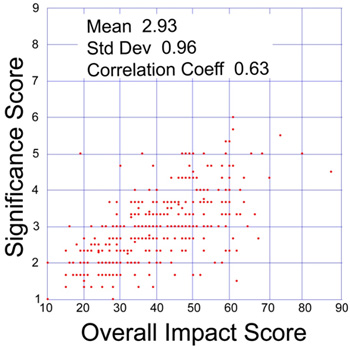
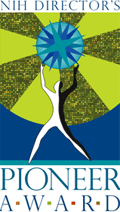 NIH has announced the 2011 competitions for the NIH Director’s Pioneer Awards and the NIH Director’s New Innovator Awards. These awards support exceptionally creative scientists who propose highly innovative—and often unconventional—approaches to major challenges in biomedical or behavioral research. Both programs are part of the NIH Common Fund and are managed by NIGMS.
NIH has announced the 2011 competitions for the NIH Director’s Pioneer Awards and the NIH Director’s New Innovator Awards. These awards support exceptionally creative scientists who propose highly innovative—and often unconventional—approaches to major challenges in biomedical or behavioral research. Both programs are part of the NIH Common Fund and are managed by NIGMS.